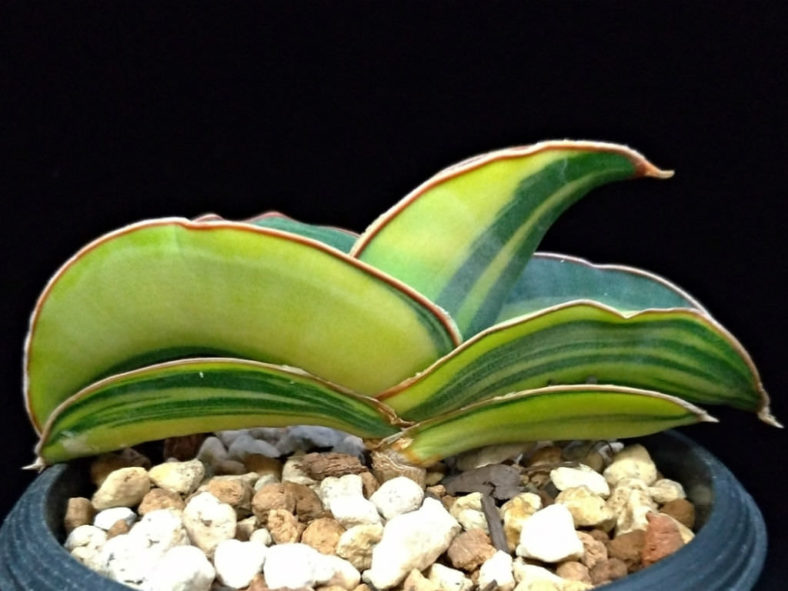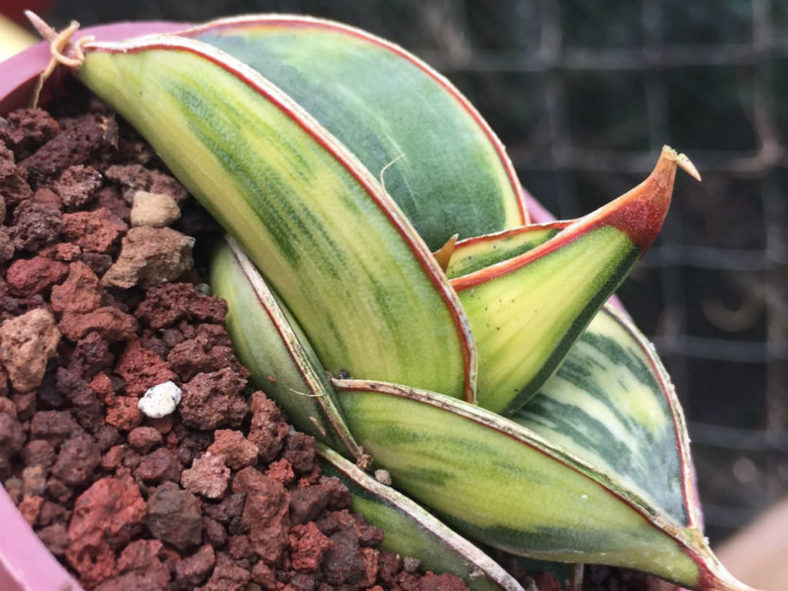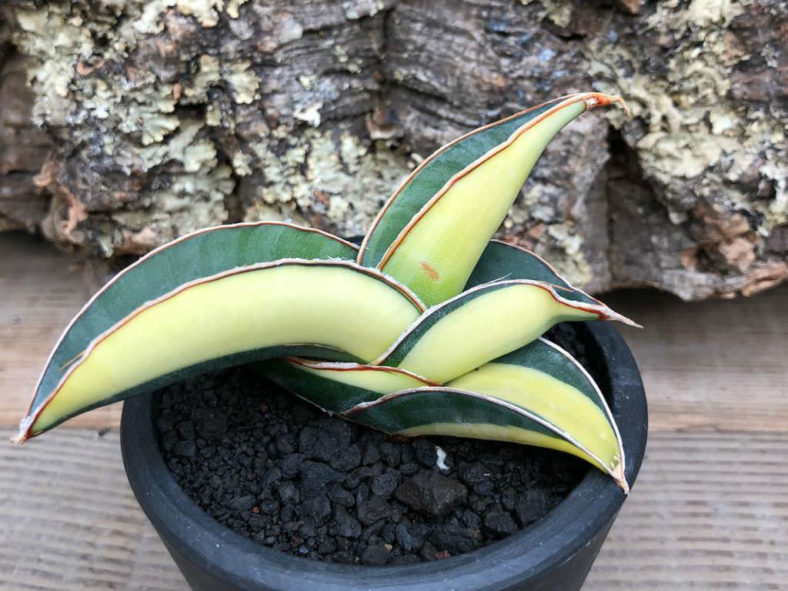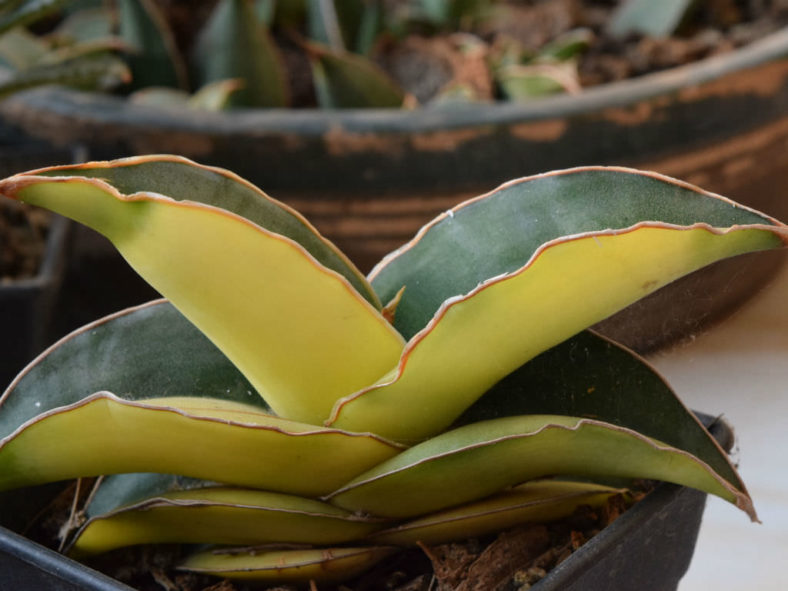Scientific Name
Sansevieria ehrenbergii 'Banana Variegata'
Accepted Scientific Name
Sansevieria ehrenbergii 'Banana'
Scientific Classification
Family: Asparagaceae
Subfamily: Crassuloideae
Genus: Sansevieria
Origin
Sansevieria ehrenbergii 'Banana Variegata' is a form of Sansevieria ehrenbergii 'Banana' selected for its variegated foliage.
Description
Sansevieria ehrenbergii 'Banana Variegata' is a dwarf, slow-growing succulent with variegated boat-shaped leaves. The leaves are gray-green to blue-green with irregular pale yellow markings. They are deeply channeled on the upper surface and curved like a banana, hence the cultivar name.

Hardiness
USDA hardiness zones 10b to 11b: from 35 °F (+1.7 °C) to 50 °F (+10 °C).
How to Grow and Care
Place Sansevierias in moderately bright or filtered light. Good locations include a spot in front of a north-facing window or front of a bright, sunny window covered by a sheer curtain. Although the plant tolerates low light, bright light brings out the colors in the leaves. However, intense light may cause the edges of the leaves to turn yellow.
Allow the soil to dry completely before watering, and then water deeply until water drips through the drainage hole. Allow the pot to drain, and discard the water in the saucer. Never let the soil become soggy or the pot stands in water. Water sparingly throughout the winter. Like most succulent plants storing water in their leaves, Sansevieria rots quickly in excessively wet soil.
Place Sansevieria at average room temperature. Protect the plant from drafts and cold temperatures as it is damaged below 50 °F (10 °C).
Feed the plant once every three weeks throughout the summer. Use a general-purpose fertilizer for houseplants diluted to one-half of the strength suggested on the container. Sansevieria is a light feeder, and too much fertilizer makes the leaves fall over.
Learn more at How to Grow and Care for Sansevieria.
Links
- Back to genus Sansevieria
- Succupedia: Browse succulents by Scientific Name, Common Name, Genus, Family, USDA Hardiness Zone, Origin, or cacti by Genus
Photo Gallery
Click on a photo to see a larger version.


